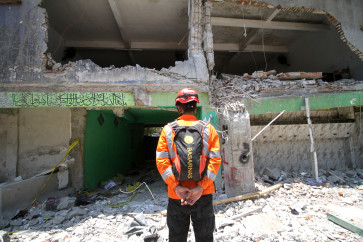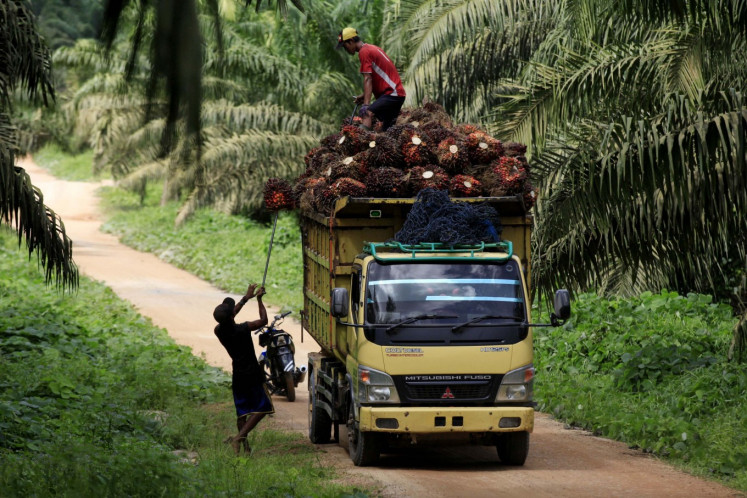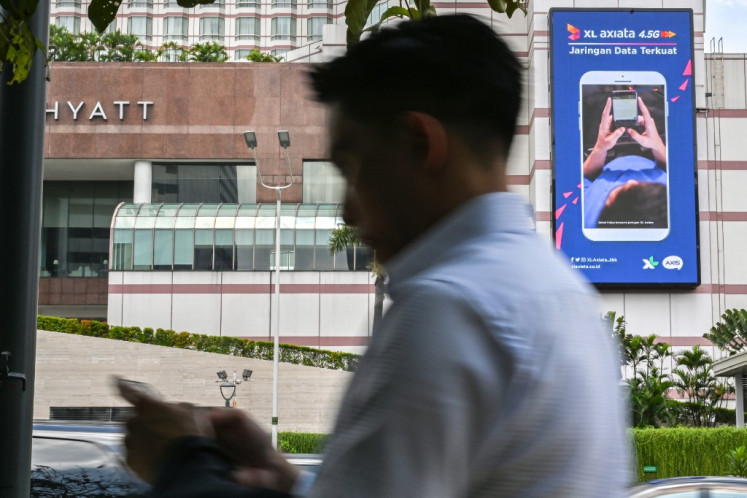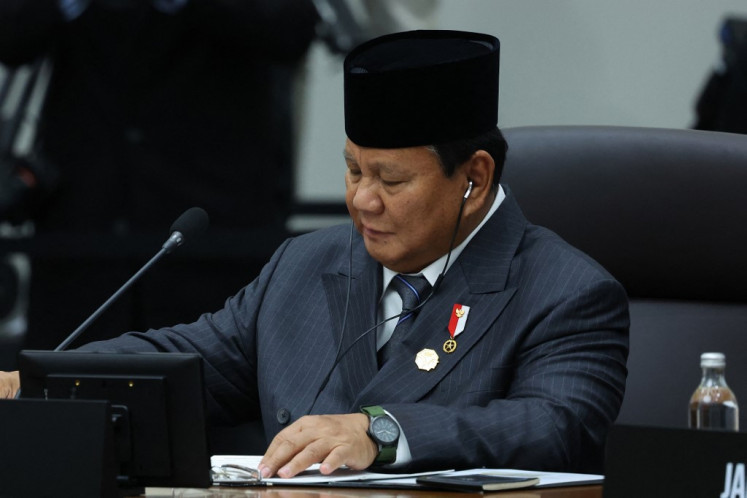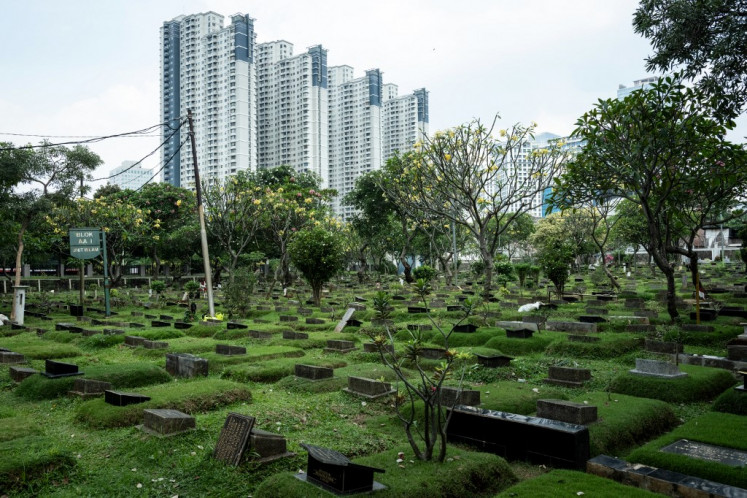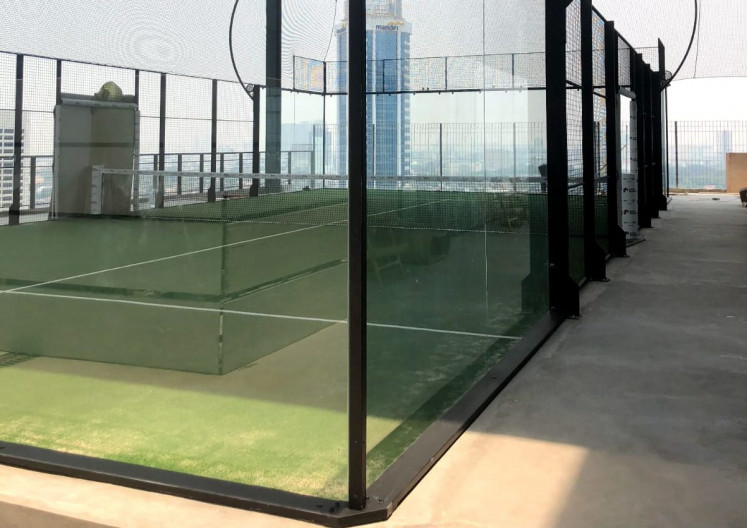Popular Reads
Top Results
Can't find what you're looking for?
View all search resultsPopular Reads
Top Results
Can't find what you're looking for?
View all search resultsCover Story: ART PASSION & FOOD MEMORIES
Ask Massimo Bottura about cooking and the famed chef will talk about how he's inspired by Charlie Parker, late 1970s Italian art and the 12,000 albums he has at home in ItalyMassimo Bottura is the patron chef Osteria Francescana, the three-Michelin-star restaurant that’s been named No
Change text size
Gift Premium Articles
to Anyone
Ask Massimo Bottura about cooking and the famed chef will talk about how he's inspired by Charlie Parker, late 1970s Italian art and the 12,000 albums he has at home in Italy
Massimo Bottura is the patron chef Osteria Francescana, the three-Michelin-star restaurant that’s been named No. 2 on the planet by the most recent S. Pellegrino World’s 50 Best Restaurants Awards.
The 53-year-old, who cooked for two exclusive 100-person seatings at Orient8 Restaurant at the Mulia Hotel Senayan in Jakarta on March 18 and 19, runs the restaurant in his home town of Modena, in Emilia-Romagna, in Italy.
Modena, as Massimo notes, is a place where the slow food movement, which touts local foods and traditional gastronomy, reigns.
It's famous for Parmigiano-Reggiano cheese and balsamic vinegar. Massimo has written books about each.
Modena is traditional small town where you’re definitely not supposed to mess around with grandma’s recipes, according to Massimo’s New Yorker wife of 20 years, Lara Gilmore.
Imagine the surprise, then, when Massimo started to present to local diners dishes with names like “The Crunchy Part of The Lasagne” or “Beautiful Psychedelic Spin-painted Veal, Not Flame Grilled”.
The veal, which was also served at the Mulia, comes with sauces strewn across the plate in what looks to be the style of Britart painter Damien Hurst.
It’s a pleasure to look at; to eat it brings an involuntary smile to your face.
The sauces–chlorophyll, potato puree, red beet emulsion and balsamic vinegar–taste as vibrant as they look, complementing the veal in surprisingly delightful–and of course delicious–ways.
In Italy, however, it took six years for Massimo to get his first Michelin star and five years to get recognized by the press. Eventually, though, diners began to understand the magic that was happening in Modena.
“Emotions. My food is about emotion,” he says of his approach. “What we are doing every day in the kitchen is compressing into every bite our passion. My passions are art, passion, food and memories. Every day in the kitchen we compress this type of passion.”
CRAZY ABOUT A TOMATO
The childlike joy a diner experiences when tasting Massimo’s dishes comes from the chef’s obsessions in the kitchen. Japanese cuisine and chefs have certainly been an influence.
Two of his principal sous chefs happen to be Japanese: Kondo Takahiko (Taka) and Tokuyoshi Yoji, who is currently chef patron of the Michelin-star Ristorante Tokuyoshi in Milan.
“As Italians, we are crazy about a tomato–a small tomato. Where it comes from. What month? Is it concentrate? What kind of soil is it? Is it volcanic soil?” Massimo says. “The Japanese have the same idea–an obsession with the quality of ingredients, the quality of the ideas and the quality of the technique.”
Massimo recalls with pleasure his experience at Sukiyabashi Jiro, the famed three-Michelin-star sushi restaurant in Tokyo’s Ginza district, dining on a meal made by its equally famed 90-year-old owner Jiro Ono, the subject of the acclaimed documentary Jiro Dreams of Sushi.
“He’s [Jiro] still now searching for perfection and so absolutely obsessed about quality–and I’m crazy about those ideas.” Massimo said.

" Lara Gilmore, Massimo's wife of more than 20 years. The couple met at a Soho restaurant where they both walked in looking for work and were hired within hours of each other. "
___________________________________
He and Taka sat at the sushi counter and were served by Jiro’s son. There was no one else in the restaurant. “He [Jiro] was so into looking at me and saw how I was eating. When I eat this kind of food I go into this [other] world.”
The master sushi chef and his son spoke with Taka. “’Massimo, in another life–he was Japanese,’” Jiro said, according to the chef.
A SPACE FOR POETRY
Maybe it’s best to say that Massimo cultivates the mindfulness of a Zen monk like Basho as he cooks. Just look at another dish served at the Mulia: “Oops! I Dropped the Lemon Tart”.
The dessert, with layers of lemon zabaglione, lemon verbena sorbet and meringue, is surrounded by dollops that look like the smallest of dabs of paint on an artist’s easel: A single caper from Pantelleria, bergamot orange from Calabria, oregano from Puglia.
It had its origins when sous chef Taka dropped a tart during the plating process. “He was ready to kill himself,” Massimo said. “I said ‘No, Taka–it’s a beautiful mistake. Let’s rebuild everything, in a perfect way.
“If you don’t get the idea, it’s just a broken lemon tart. So you don’t serve it,” he adds. “But if you add the idea–and you have poetry in your everyday life, you can build an image of the imperfection as a transference of emotion.”
He returns to the dessert’s locally-sourced caper, orange and oregano. “All these different regions of the south of Italy, which is the most ‘broken’ place in the world, as a lemon tart. But when you taste it, who cares if it is broken? It’s about transferring the emotion of the south and the sun and the figs.”
Picasso was always saying ‘In my job, it’s about 90 percent hard work and about 10 percent talent,” Massimo says. “The talent is creativity,” he adds. “It’s important that you keep a little space in your life open for poetry. If you get lost in everyday life, you get lost in obsession.”
CONTAMINATION
Although Massimo speaks–enthusiastically–about classic Italian poets like Alessandro Manzoni, Beat poets like Allen Ginsberg and jazz musicians like Miles Davis; it’s clear that his philosophy of fine dining has its origins in fine art.
In the 1990s, chefs cooked too abstractly and diners were confused, Massimo says. So he turned for inspiration to the Transavanguardia movement, spearheaded by artists such as Sandro Chia, Francesco Clemente, Enzo Cucchi and Mimmo Paladino.
Transavanguardia, the most important movement of the 20th century in Italy after Futurism, according to Massimo, was a figurative, back-to-basics response to the conceptual, minimalist art of the 1970s.
“We needed to rebuild the classics–to be inspired by the classics in a contemporary way,” he says.
As examples, Massimo cites Chia, from Tuscany, who took inspiration from early Etruscan graffiti, and Paladino, a Sicilian who let himself get “contaminated” by that island’s early Greek influences.
It was a critical moment. “You have to learn all the basics, then you can go abstract and avant garde,” he says. “I was following the same mental process."
He continues. “I was creating tagliatelle romano-but thinking about myself and projecting myself into 2020. I was showing everyone in Emilia-Romagna that they didn’t understand anything about contemporary cuisine–that I could make a tagliatelle better than their grandmothers.”
It wasn’t easy. Look at another of Massimo's famous dishes, “Five Ages of Parmigiano Reggiano in different temperatures and textures”, which serves the cheese as a souffle, a sauce, a foam, a galette and flavored water.
“Five Ages” was met with confusion when it was introduced in 1993, Massimo said–but 18 years later, it was named dish of the decade by the Italian Gastronomic Conference.
ON INDONESIAN FOOD
Massimo supports local food throughout the world. He’s one of the judges for Basque Culinary World Prize, which celebrates chefs who demonstrate how gastronomy can be a force for change outside the kitchen.
It’s no surprise that he, Lara, and three chefs from his Modena kitchen became fans of Indonesian food when dining at the Mulia after their arrival.
The quintet sampled sambal mangga and sambal terasi, sop buntut oxtail soup, tongseng kambing spicy lamb stew and Padang-style rendang beef braised in coconut.
The favorite, however, was ayam panggang grilled chicken with sambal Kalamata, Massimo said. “That would be so successful around the world.”
“In a food truck!” Lara adds.
“In a food truck, because it is so simple, in a way. It is a kind of cooking that’s slow and roasted with spices, but also with sweetness and also acidic,” Massimo said.
He notes that Italians favor a very light cuisine that’s intense in spices, sweetness and acidity, and that the secret of Indonesian cuisine is the balance it strikes between sweet and savory.
“I know and I feel immediately how to do it,” Massimo says of the tongseng kambing. “I know exactly how to make it at a different level, a gourmet level.”
We were so excited. We were asking for doubles,” he says. “We need people teaching us [about Indonesian cuisine], we need people importing these ingredients.”
Massimo advises local chefs to start simple, citing a week he spent in Seoul cooking with traditional Korean ingredients, such as kimchi, chunjang and ginseng.
“To be appreciated in the Western world, in places like London or Paris; you need to slow down a little,” Massimo said he told the Koreans. “A preparation like kimchi will not be a success, because it’s too aggressive. You need to start with a few things, like Korean barbeque, to attract first the masses, before going to high-end cuisine.

A CONTEMPORARY MIND
Lara says that Massimo has no plans to open a branch of Osteria Francescana in a global culinary capital such as New York or Dubai.
Instead, the pair are readying a new book, Bread Is Gold, a cookbook/memoir documenting their experience at the Expo Milan 2015, where Massimo set up a soup kitchen for some of the world’s best chefs to cook the waste from the other pavilions.
“We were feeding poor people at night and kids during lunch,” he says. “It was more of a cultural experiment, as an example for the young chefs not to waste. They saw us as stars, so if we can influence the young generation not to waste food, it would be a very important step.”
It shows that Massimo, one of the world’s most famous chefs, has little concern for being a celebrity chef.
“I never look back. Yes, I know every single prize we’ve won,” he says of when Forbes recently named his restaurant the world’s best. “I know that we’ve got those prizes, but it’s not about the past–it’s about the future. What really inspires me is the future. My mind is a contemporary mind, so it’s always projecting into the future.”
The past doesn’t mean anything to me,” Massimo says. “It’s just a point of starting.”
_____________________________________
ON INSTAGRAM
Massimo is no fan of Instagram at the dining table. “You need to eat. You need to taste. You need to enjoy the experience–and then ask me of you want to take a picture.”
It’s a reflection of Massimo’s obsession with timing, temperature and texture–factors he’s calculated with precision.
“We are crazy about serving the risotto at the right temperature and the right creaminess. As soon as it’s done, it has to go out immediately, he says, before describing preparations for his dinner at the Mulia.
“I was calculating yesterday the steps between where we were plating and where we were serving at the table. These are 30 steps, these are 20, these are 25,” he says. “There was a private room. I said cannot serve that private room from the kitchen. I said I want a room close to that private room, so we can plate and its only 15 steps instead of 100.”
__________________________
SHORT TAKES
Massimo makes quick work with the standard questions asked of chefs. Comfort food should remind you of childhood, he says: “A piece of Parmesano, a few drops of balsamic vinegar.” His wife will make the meals at home: “Usually Lara cooks. She makes the best minestrone soup.” (Although Lara adds that the family sometimes takes advantage of the mind-bogglingly good staff meals at Osteria Francescana). Favorite ingredients? Humility, passion and a dream. He was surprised when promoting his book Never Trust a Skinny Italian Chef at Google and Apple in Silicon Valley. The dozens of Italians engineers he met said they left home because Italy had no room for them. “It’s very difficult to have a dream, especially for the young generation. They stop dreaming.”
"Lentils Better than Beluga" As the menu states: "Chilled over ice, these minature black lentils take on the shape and flavor of caviar".




